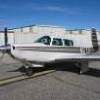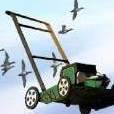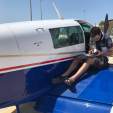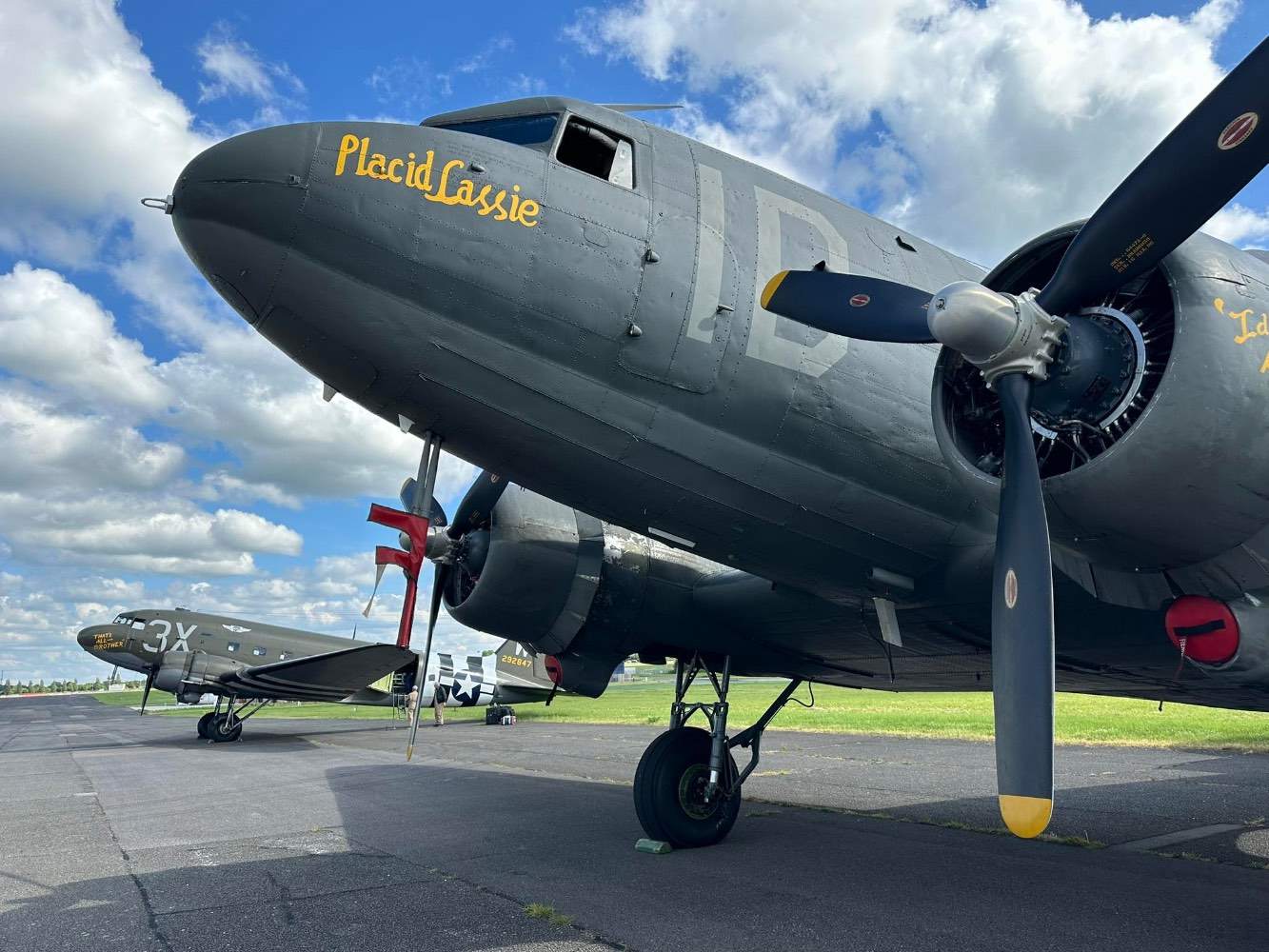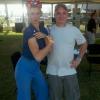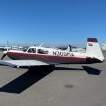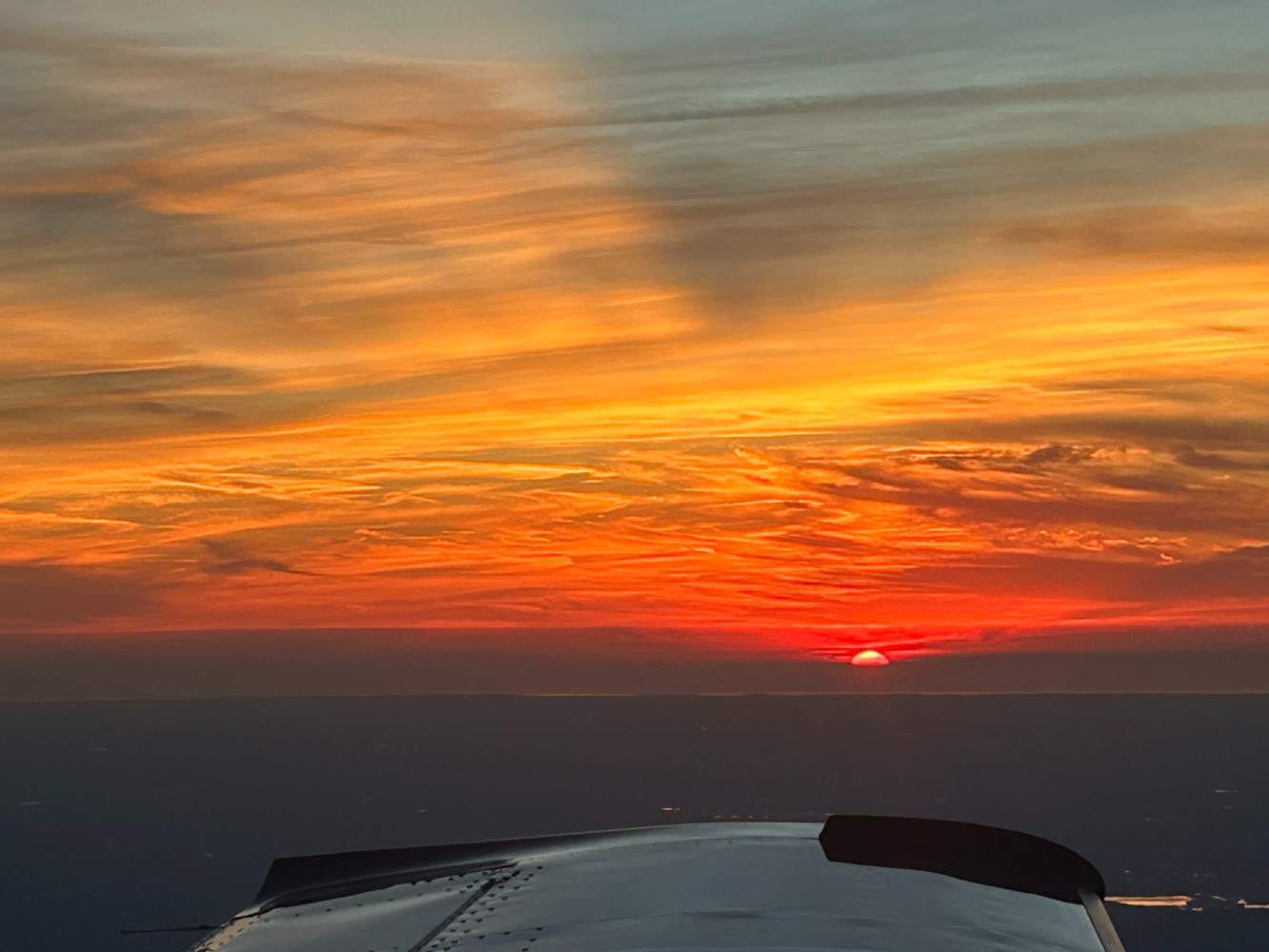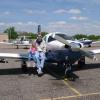Leaderboard
Popular Content
Showing content with the highest reputation on 05/23/2024 in all areas
-
I seriously doubt that Mike ever intended to have his prepurchase clients access data from his other clients (free or paid) without permission. Apparently there are holes in the firewall between services. Paul @kortopates has been made aware of it and I trust it will get resolved.4 points
-
As mentioned above those references are waaaay out of date. It used to be that you could use GPS as a monitor to VOR approaches from the FAF to the MAP. Within in the past several years that has been replaced with you can use GPS as the primary nav source from the FAF to the MAP if you monitor the underlying nav source. WRT HILPT, they wouldn 't be in the database if they were illegal. I'll continue to teach their use when available in conjunction with ILS approaches. Actually, AIM 1-2-3c seems explain it all. I see a distinction between 1-2-3c4 and 1-2-3c5. The first was flying the approach in lieu of the underlying navaid and was used initially as an overlay approach before new GPS approaches were designed. The second is used when the underlying navaid IS available and can be used in conjunction with it to fly the final approach segment. 1-2-3c2 specifically excludes GPS in lieu of ILS, LOC, and back course approaches.4 points
-
The privacy policy appears to date from more than 10 years ago, and I think it would benefit Savvy to update and clarify it and/or publish some statement on how your data is accessed by third parties and for what purpose. @kortopates mea culpa is a good start, but it’s not obvious he speaks for the company. I believe there was no intent to abuse the OP, but rather there was a break in communications internally at Savvy. From some of the good points raised in this thread, I’d be happy if they stated clearly that Savvy will use your anonymized data for creation of aggregated fleet, model, or manufacturer benchmarks Savvy will process and analyze uploaded data for a plane regardless of who uploads it. (They can’t possibly determine if Joe Smith is the managing member of XYZ Llc, and many technicians will upload data on behalf of their customers.) Savvy will share data and/or analysis with third parties only with prior permission of the account holder. Savvy pre-buy will not disclose if a plane is enrolled in the data logging. The existing privacy policy statement appears to be generic language, and perhaps their attorney feels they need this precise language. I believe the bigger risk to the company is the reputational risk of being indiscreet with private data than is the risk of some complaint covered by the current policy. I’m a big fan of Savvy and happily pay for the analysis. @kortopates must be growing weary of my long list of issues, but I think we have both learned a lot working through them together. I would like this company to prosper, and I believe a clear statement of how they protect YOUR data will help ensure future success. -dan4 points
-
I think people get to love what they become familiar with. I think the F has a lot going for it. Is it because I own one? Well yes. It is hard to really understand what's great about an airplane until you've lived with it a while. What I think is superior about it compared to other 4 place singles: Light weight (<1700lbs) Manual gear and flaps. Retractable step (continues to function flawlessly after 57 years with no mx, just lube) Good speed (reliable yields 150kt cruise over a broad range of altitudes) Solid climber into the teens (easily avg 1000fpm to 10,000' when solo) Fun to yank and bank at light weights Good short field performance. Stable cross country platform Enough UL to put 800lbs in the cabin and go 500NM with reserves Bendix S20/200 mags Excellent heating and ventilation system. Comfortable for four adults. Folding, split rear seats. I like the smooth flight controls on the vintage birds Good access to back side of instrument panel What I think is suboptimal: Cowl shape Cowl aesthetics Steeper windshield angle. ( though I actually like the look of the two piece) Twist wing (only because wing tips are not available) No gross weight increase available (if there were, I'd have a UL of 1,219lbs making it one of the best load hauling piston singles in existence) What I would do to make it better if money were no object Perhaps a TN system slope windshield mod 201 or Lopresti cowl mod There are panel and interior upgrades galore. These are more a reflection of the owner's tastes and budget than a model specific attribute.4 points
-
Flying with a 250hr CFI is a weird dynamic. I’m guessing it’s much like a seasoned NCO having to answer to a green officer fresh out of OCS. I’ve flown with some really good, low time instructors, they know they are there to observe that I am meeting standards. Beyond that, they are eager to learn.4 points
-
I just watched the same video after reading your post - I'm assuming it was the recording of Gary's presentation at the NAFI Summit? BLUF (bottom line up front): His context was mistakes instructors make when teaching GPS (in his opinion), how to best teach GPS so your student doesn't fail his/her check ride (in his opinion), and implies his methods will prevent common oversights when things don't go optimally on approach, which they will. He says "Don't do it" but doesn't say you can't do it, with the intent of encouraging instructors to teach their students using raw LOC data for the entirety of a non-GPS approach. His opinion and technique, and not necessarily what is legal and not legal. This is the way I do it as well. Gary's implication, and I think he even says it at one point, is that the student on a check ride will only be looking at the PFD and not at the NAV 2 CDI, and will not catch that the system has not auto-switched from GPS to VLOC. Of course this assumes the PFD can't display both the GPS course and the LOC info you have on your bearing pointer, and that the student won't be cross-checking a separate NAV 2 CDI with the LOC course. There are other ways to teach it to achieve the same results. Cheers, Junkman3 points
-
A lot of light single engine airplane flight manuals call for climb at approximately 75% power. There may a reason for it (cooling, noise, ??) or it may be a carryover from higher powered engines that had time limits for takeoff power (common with radials). If it’s not listed as a limitation, you don’t have to observe it. If a CFI insists, I’d do it his/her way and discuss it on the ground. Learning works both ways. Students have taught me lots of useful things.3 points
-
Some might pull the prop back a bit during climb or cruise climb, but many leave the throttle firewalled until they want to come down. If you are normally aspirated, the manifold pressure will come down with increasing altitude, so not much benefit to pulling it back prematurely.3 points
-
Maybe applies here, I have heard it said, ‘Good judgement comes from experience, Experience comes from bad judgment “.3 points
-
It wouldn’t hurt, but it would be a lot of work and a couple of pounds of cable. I would just clean up the shelf connections and call it a day.3 points
-
I think that the right model for any person depends on the person and so many other factors. My primary flights are: 100NM over mountains through ice, about weekly. (2S0<->KBFI) 266 NM over mountains through ice, about quarterly (2S0<->KCVO) 1271 NM over all the mountains, but usually not a lot of ice, about semiannually (2S0<->KFFL) I'm really happy with my K. The turbo makes getting to the altitudes where I have a lot more options so much easier/faster. And the longer flights go by much faster. But this is only really useful for me because my budget can absorb this cost. And because my bladder can deal with this flight length. And my risk tolerance can deal with the altitude. And my budget does not cover anything better/faster/pressurized/turbine.2 points
-
I wonder if the deeper problem is the conflict of interest (or dual agency) situation that Savvy gets into when the Seller and Buyer are both paying for services. It's not practical for an expert to "forget" what he or she knows about an aircraft just because the logs aren't mentioned. And any organization has a limited # of experts. It's as was mentioned above regarding conflict checks with attorneys. Solutions would be to avoid dual-agency, or have both parties sign a form accepting it (as IIRC can be done with realty agents?). While I imagine most sellers understand the view of technical due diligence, the other side of the coin is having the Buyer critique every time you pick your nose... Kind of like some people with cars "there's a paint chip, I want $1000 off the price". In any case, I really don't want my info shared without my prior approval, either, for any number of sane privacy-default reasons. And we haven't even talked about the discrimination insurance companies can inflict with data harvesting. Think healthcare. AFAIK Savvy is not dealing with them as they are GA owner/operator-focused. But it could be coming "get a discount [ie. be able to afford insurance] if you agree to disclose". Anyhow, I hope this will drive some clarification of policies. I really like the service and am generally a supporter of the kind of positive entrepreneurial small business that Mike Busch represents. DK2 points
-
It’s about that last part of what you quoted. If Gary said you can’t fly any portion of the procedure turn with GPS, I disagree. After all, those were designed as dead reckoning segments and that’s how we flew them before GPS. But if he’s saying that you have to intercept a green LOC inbound course, even if outside the FAF, I agree.2 points
-
2 points
-
Or weep no more in Wilmar MN, tank sealing is the one job you want to stay away from no matter how smart or experience you are2 points
-
25/25 climb is VERY old school. It is what I used in the 80s. More up to date is to climb full throttle, full RPM. For turbo, full rich. For NA, lean to about the same EGT as take off once at a moderate altitude'2 points
-
‘We’re the government and we’re here to help’… cringes everyone… -Don2 points
-
In my 20s I was a bold pilot. In my 30s I flew a lot including flying into thunderstorms, mountain waves and ice. I’m not bold anymore…… Until you have been in a situation where your survival is uncertain, you are not a seasoned pilot. I hope none of you become seasoned.2 points
-
This is all you need to know: Wet Wingologists 954-647-0154 https://wetwingologistseast.com2 points
-
Maybe something I can do is make a video while trying to shut a door in flight. That would be fun.1 point
-
1 point
-
I think there are some attorneys on MS who might have more understanding than I can generate here... I guess if you aren't giving any consideration away then you haven't bought anything (and I generally subscribe to your point "if you're not paying you are the product"). OTOH Savvy is gaining value from this sharing of data, which, as it is portrayed, is monetized in *anonymous* ways. So the idea that data tied to your specific identity is being given for money, in ways that might be contra to you as a party in a different deal, seems different. Clear as mud, I've made it. I hope we hear back from Paul's inquiries.1 point
-
1 point
-
Yes, whether or not TOGA disengages or retains the AP is it is OEM and version dependent. I think Cirrus Perspective may have been the first to keep it engaged. The GFC500 keeps it engaged. But even then, NAV vs HDG is an option.1 point
-
Remember that any MSC can order parts from Mooney, but they all set their own markups. LASAR seems to have raised its prices lately and doesn’t stock nearly as much as it used to, so it may not always be the best choice.1 point
-
I have and it unfortunately it says: Recommended power setting for normal climb is 2600 RPM and 26 inches manifold pressure. That climb setting works but it seems optimized for a specific set of outcomes...namely reducing climb performance and increasing oil and cylinder head temperatures. On the upshot, at least it gives you more to do during the initial climb phase.1 point
-
We are flying the same power plant so I will give an exact SOP. All knobs forward for take off. Positive rate, gear up Flaps up ~85MIAS. Pitch for desired climb speed. I use ~120MIAS for cruise climb. Less if I’m light. If noise is a concern reduce RPM to 2500 as soon as practicable Reference leanest Cylinder and maintain EGT ~1250 +/-30° depending on hottest CHT. Cowl flaps closed 25’ below target altitude. Level and set desired RPM and mixture1 point
-
@Rick Junkin will probably chime in, but when I did the panel on a Bravo I owned, I ordered new lenses. Any Mooney Service Center can order them. I ordered mine from Dan at Lasar and since Mooney drop ships them I had them the next day. If I remember correctly both of them were a couple hundred dollars total back in 2018. In the grand scheme of aviation expenses it wasn't much. The Mooney part number for the Lens, Flap/Trim is 880060-001. The Mooney part number for the Lens, Rudder Trim is 880058-001. Edit - here's a post that deals with it:1 point
-
https://mooneyspace.com/topic/46274-modded-f-versus-j/1 point
-
@Jetpilot86 I believe that the overhead light panel you’re referring to may be an electroluminescent panel. They can be overhauled by either Air Capital Dial or Nimbus Aviation.1 point
-
1 point
-
I’ve known many old and bold pilots. I’m not advocating bold behavior. I’m just saying this old axiom does not always fit. The poll needs a 5th option “Not old and no longer bold”1 point
-
1 point
-
1 point
-
Agreed, but an Encore modded 252 is slightly better useful load. Add Monroy tanks (104 gallons usable) and you have a serious traveling machine. 175 KTAS at 10.1 GPH in the mid-teens.1 point
-
Thanks! I ultimately bought new, but I did take a whack at refurbishing the originals. Mine had bubbled/warped and I was able to use an iron to flatten them out, but I wasn’t able to get the surface renewed to my satisfaction. They looked ok and I would have put them back in if I wasn’t updating the panel, but decided I’d rather have the new ones. Cheers, Junkman EDIT: Here's a picture of the new versus refurbished indicator lenses. I wasn't able to get the top coating completely stripped off the original lenses.1 point
-
When comparing the older models to the J everyone focuses on the speed mods and purchase cost but nobody talks about the single greatest design improvement of the J. It doesn't use one of those accordion air-intake boots made of unobtanium.1 point
-
For value, ie speed, efficiency, and useful load, I believe the Encore is the best choice. You can fly fast, far, high, using very little fuel. Barrier to entry is greater than older lower performers, but you get a lot for your money with an Encore.1 point
-
Um, yes to both. It’s in the manual for earlier models and I’ve also heard some well respected shops/pilots say they don’t use it. Some old models had a Dukes pump that would eventually come apart so maybe that was a reason? Newer weldon pumps and the oh’d dukes are continuous use so should be fine. Now just remember, it’s needed for priming, but once the engine is running, the mechanical pump is extremely reliable.1 point
-
That maneuver *definitely* works. A significant mechanism is increased "recruitment" of the alveoli, the little air sacs where "the magic (of gas exchange) happens". They are collapsed but open up when you pressure-breathe yourself as above, and when you breath more deeply, particularly at the lung bases. Unsure how much the absolute pressure increase helps in terms of partial pressure driving gas exchange (given the limited pressures we can generate with our chest esp. during inspiration, would have to look it up) but it certainly doesn't hurt. I have used the above to "get by" in terms of avoiding mild hypoxia at bordlerline altitudes when we brought the wrong cannulas on a demo flight. A pressure-demand or other positive pressure system helps with the above by delivering external boost. E.g. the common narrow panel military regulators. Another important practical physio point to digest: as you climb, the partial pressure of CO2 decreases along with O2, and the lesser absolute value of CO2 will decrease respiratory drive. So you just won't breath as often. So a very basic thing to do is remember to breath more regularly than you feel compelled to, and a bit more deeply. If you do both of the above, you can boost your effective oxygenation by a surprising amount at middling altitudes. HTH1 point
-
1 point
-
The TCDS should be definitive. https://drs.faa.gov/browse/excelExternalWindow/6EA0F05ECCA8304486258305006833CF.0001?modalOpened=true1 point
-
I've flown and taught in all Mooney models except the D and G, the Cessna 210, most the the Cessna 310s including the R model. I have 1 hour of Cirrus time. That tells you what I think of Cirrus. The 210 carries a lot, the gear is expensive to maintain and it is heavy on the controls. The 310 is the perfect twin if you expect to trade up to a jet later on. You can buy them cheap, but that is where low cost stops. The most useful 310 is the Q because it is turbocharged. They are REALLY expensive to maintain. In today's market the Bravo gives you the most bang for the buck in my biased opinion. I've had mine 32 years in August. If you fly by the numbers, all Mooneys are easy to fly and land. If you don't, you're in for a rough and possibly expensive ride. If you fly with the precision required of the Mooney, most other singles are simple to manage. Regarding annual costs for ownership of the Bravo: Mooneys in my opinion should be maintained by a Mooney Service Center. For the Annual a minimum of 31 hours is required for the inspection alone; that's about $4,500. Then there are other items that have be addressed. Figure $8,000-$10,000 all said and done if nothing major needs to be addressed. Hangar for me is $7,320, but I have a hangar at a Class C airport, KSCJ. Insurance for a newbie could be really expensive, but for me its $3,900 and rising due to age. Then there is fuel. For 120 hours per year flying at $6.50/gal and 18 gal/hr average, that is $14,040. Other maintenance last year was only $5,000. So, based on last year it cost 10,000+7,320+3,900+14,040+5,000 = $40,260. So figure at least $40,000 per year for now to own the Bravo.1 point
-
1 point
-
Took my J up yesterday to test a "refurbished" (thanks @Jake@BevanAviation!!!) KC-192 autopilot computer. It performed flawlessly! After I landed and shutdown, I opened the cabin door in front of my hangar. The way I felt was confirmed by the license plate on my Tacoma! I had to memorialize the moment with a picture. A beautiful evening in Alabama!1 point
-
I used Dorr Aviation. They brokered the financing and got me a very good rate. And they even gave me a keyring engraved with my N number when the deal closed. My contact there was Alex Howe - ahowe@dorraviation.com1 point
-
I it legal to shotgun those things out of the air? Pretty sure I could bring it down at 15 feet.1 point
-
1 point







